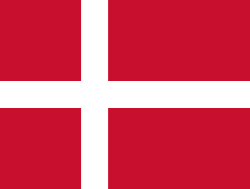| Colony of Greenland | |||||||||||
|---|---|---|---|---|---|---|---|---|---|---|---|
| Colony of Denmark | |||||||||||
| 1950–1953 | |||||||||||
 the Colony of Greenland and Denmark in 1952, highlighted in green and light green respectively | |||||||||||
| Capital | Godthaab (Nuuk) | ||||||||||
| Government | |||||||||||
| • Type | Monarchy Colony | ||||||||||
| King | |||||||||||
• 1950–1953 | Frederik IX | ||||||||||
| Governor | |||||||||||
• 1950–1953 | Poul Hugo Lundsteen | ||||||||||
| Historical era | Post-war | ||||||||||
| 1950 | |||||||||||
| 5 June 1953 | |||||||||||
| |||||||||||
The colony of Greenland was a Danish colony created in 1950 with the union of North Greenland and South Greenland, and was ruled by one governor. [1] In 1953, the colony of Greenland was made an equal part of Denmark as an amt .

